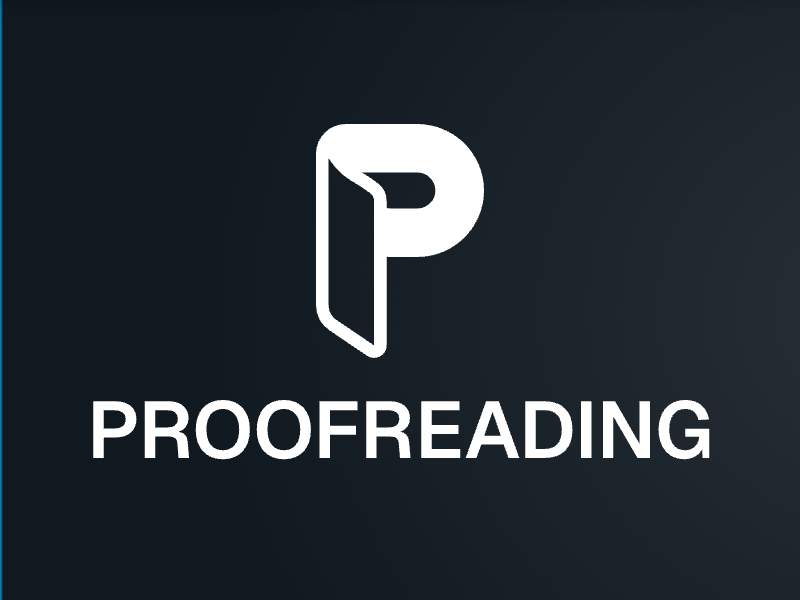Essential Proofreading Software for All Writing Needs

Proofreading is a crucial step in creating polished and professional writing. Mistakes like grammar errors, misplaced punctuation, or confusing sentences can distract readers and weaken your message. This is where proofreading software tools come in handy. These tools help you catch hard-to-spot errors, improve clarity, and maintain consistency in your work. They also save you time by automating repetitive corrections. However, while proofreading software enhances your writing, it cannot fully replace the human touch. Your unique style and intent still require a personal review to ensure your work truly shines.
Key Takeaways
Proofreading software is essential for catching grammar, spelling, and punctuation errors, enhancing the professionalism of your writing.
These tools improve clarity and readability by suggesting style changes, making your content more engaging for readers.
Using proofreading software saves time by automating repetitive corrections, allowing you to focus on content creation.
Different tools cater to specific writing needs: Grammarly for everyday writing, ProWritingAid for long-form projects, and Autocrit for fiction.
While software is helpful, it cannot replace the nuanced understanding of a human editor, who can refine your unique voice and intent.
Combining proofreading software with human editing ensures your writing is polished and resonates with your audience.
Consider your writing type, budget, and experience level when choosing the right proofreading tool for your needs.
Why Use Proofreading Software Tools?
Proofreading software has become an essential companion for writers of all levels. Whether you're crafting an email, a novel, or an academic paper, these tools can elevate your writing by catching errors and improving readability. Let’s explore why these tools are worth considering.
Benefits of Proofreading Software Tools
Identifies and corrects spelling, grammar, and punctuation errors.
Proofreading software excels at spotting mistakes that you might overlook. A reliable grammar checker ensures your sentences are free from typos, misplaced commas, or incorrect verb tenses. This feature helps you maintain professionalism in your writing.
Enhances clarity and readability through style suggestions.
Sometimes, your sentences may feel clunky or unclear. Proofreading tools analyze your text and suggest ways to simplify or rephrase it. These recommendations make your writing easier to understand and more engaging for readers.
Saves time and improves efficiency for writers.
Manually proofreading your work can be time-consuming. Proofreading software speeds up the process by providing instant feedback. You can focus on creating content while the tool handles repetitive corrections.
Provides consistency in tone, spelling, and formatting.
Maintaining a consistent tone and style is crucial, especially for professional or academic writing. Proofreading software ensures uniformity by flagging inconsistencies in spelling, capitalization, and formatting.
Offers readability scores and flags passive voice.
Many tools provide readability scores to help you gauge how accessible your writing is. They also highlight passive voice, encouraging you to write in a more direct and active manner. This makes your content more dynamic and engaging.
How Proofreading Tools Complement Human Editing
Handles repetitive and technical corrections.
Proofreading software shines when it comes to repetitive tasks. It quickly identifies common errors, such as misplaced punctuation or incorrect word usage. This allows you to focus on the creative aspects of your writing.
"Automated proofreading software speeds up revision cycles using advanced text verification technology." This efficiency ensures that even large volumes of text are processed quickly and accurately.
Allows human editors to focus on higher-level content and style.
While proofreading software is excellent for technical corrections, it lacks the nuanced understanding of language that human editors bring. By handling basic errors, these tools free up human editors to concentrate on refining your content’s structure, tone, and creativity.
In short, proofreading software tools act as your first line of defense against errors. They enhance your writing while saving you time and effort. However, combining these tools with human editing ensures your work reaches its full potential.
Top Proofreading Tools for Different Writing Needs

When it comes to choosing the right proofreading software, your specific writing needs play a significant role. Below, you'll find some of the best proofreading software options tailored for various purposes. Each tool offers unique features, strengths, and limitations to help you decide which one suits you best.
Grammarly: Best Proofreading Software for Everyday Writing
Grammarly stands out as a versatile and user-friendly tool. It’s perfect for everyday writing tasks like emails, essays, or blog posts. This software provides real-time suggestions to improve your grammar, spelling, and tone.
Features:
Contextual spell checker to catch nuanced errors.
Advanced grammar checker for sentence-level corrections.
Tone detector to ensure your message aligns with your intent.
Readability scores to make your writing more accessible.
Plagiarism detector to maintain originality.
Pros:
Quick and easy to use, even for beginners.
A robust free version that covers basic proofreading needs.
Browser extensions and mobile apps for on-the-go editing.
Cons:
Less effective for long-form writing like novels or research papers.
Premium version can feel pricey for casual users.
If you’re looking for a reliable tool to polish your everyday writing, Grammarly is an excellent choice. Its intuitive interface and helpful features make proofreading a breeze.
ProWritingAid: Best Proofreading Software for Long-Form Writing
For writers tackling lengthy projects, ProWritingAid offers unmatched depth and detail. It’s designed to provide comprehensive feedback on grammar, style, and readability, making it ideal for authors, academics, and professionals.
Features:
Contextual spell checker to identify subtle mistakes.
Grammar checker with detailed explanations for corrections.
Style editor to refine sentence structure and flow.
Pacing analyzer to ensure your writing maintains a steady rhythm.
Multilingual support for diverse writing needs.
Plagiarism checker to verify content originality.
Pros:
In-depth writing analysis with over 20 detailed reports.
Encourages sentence variety and highlights overused words.
Integrates seamlessly with tools like Microsoft Word, Google Docs, and Scrivener.
Cons:
Premium versions can be expensive for budget-conscious users.
The extensive features may overwhelm beginners.
ProWritingAid acts as a writing coach, offering insights that go beyond basic proofreading. If you’re working on a novel, thesis, or detailed report, this tool will help you elevate your writing.
Autocrit: Best Proofreading Software for Fiction Writers
Fiction writers often need specialized feedback, and Autocrit delivers just that. This tool focuses on creative elements like pacing, dialogue, and word choice, making it a favorite among novelists and storytellers.
Features:
AI-powered analysis tailored for fiction writing.
Pacing and dialogue evaluation to enhance storytelling.
Writing strength and word choice analysis for impactful prose.
Pros:
Designed specifically for creative fiction.
Helps improve story pacing and character dialogue.
Cons:
Weak grammar and spelling checks compared to other tools.
Requires text uploads, which may disrupt your workflow.
Autocrit goes beyond surface-level proofreading by diving into the heart of your story. It’s the perfect companion for fiction writers aiming to refine their craft.
Hemingway Editor: Best Proofreading Tools for Writing Style and Structure
If you want to refine your writing style and structure, Hemingway Editor is a fantastic choice. This tool focuses on making your writing clear and concise. It highlights areas where you can simplify your sentences, helping you create content that’s easy to read and understand.
Features:
Readability scoring to measure how accessible your writing is.
Highlights adverbs to encourage stronger word choices.
Tags passive voice to promote more direct and engaging sentences.
Checks sentence length to identify overly complex or run-on sentences.
Pros:
Provides big-picture feedback, making it ideal for improving overall writing style.
Encourages the use of active voice and simpler words, which enhances clarity.
Offers a free online editor, making it accessible to everyone.
Cons:
Does not include grammar or spelling checks, so you’ll need another tool for those.
Feedback can feel vague, leaving you to interpret some suggestions on your own.
Hemingway Editor works best for writers who want to focus on readability and structure. It’s perfect for blog posts, essays, or any content where clarity is key. While it doesn’t handle technical proofreading, it’s an excellent companion for improving your writing style.
How to Choose the Best Proofreading Software for Your Needs

Selecting the right proofreading software depends on your specific writing goals, budget, and experience level. With so many options available, it’s important to match the tool to your needs. Here’s a breakdown to help you decide.
Based on Writing Type
Fiction: Autocrit for creative feedback on pacing and dialogue.
If you’re a fiction writer, Autocrit is your go-to tool. It focuses on storytelling elements like pacing and dialogue, helping you craft compelling narratives. Its AI-powered analysis evaluates your writing’s strengths and suggests improvements for word choice and flow. This makes it ideal for refining your characters’ conversations and ensuring your story keeps readers engaged.
Academic: ProWritingAid for in-depth analysis and structure.
For academic writing, ProWritingAid offers unmatched depth. It provides detailed reports on grammar, style, and structure, ensuring your essays or research papers meet high standards. The pacing analyzer and style editor help you maintain clarity and coherence, which are essential for academic success. If you’re working on a thesis or dissertation, this tool will guide you through the process with precision.
Business: Grammarly for quick, polished communication.
In the business world, clear and professional communication is key. Grammarly excels at polishing emails, reports, and presentations. Its tone detector ensures your message aligns with your intent, whether you’re writing a formal proposal or a casual team update. With its real-time suggestions, you can quickly refine your writing and leave a lasting impression.
Based on Budget
Free Options: Grammarly (free version), Hemingway Editor (online).
If you’re on a tight budget, you can still access effective proofreading tools. The free version of Grammarly covers basic grammar and spelling checks, making it a reliable choice for everyday writing. Hemingway Editor, available online for free, focuses on readability and sentence structure. It highlights complex sentences and passive voice, helping you create clear and concise content without spending a dime.
Premium Options: ProWritingAid for long-term investment, Autocrit for fiction writers.
For those willing to invest, premium tools offer advanced features. ProWritingAid provides comprehensive feedback, making it a valuable long-term investment for academics and professionals. Fiction writers will benefit from Autocrit, which specializes in creative writing. These premium options deliver detailed insights that elevate your work to the next level.
Based on User Experience
Beginners: Grammarly for ease of use.
If you’re new to proofreading tools, Grammarly is the perfect starting point. Its intuitive interface and real-time suggestions make it easy to use. You don’t need any prior experience to navigate the tool and improve your writing. It’s a great choice for students, casual writers, or anyone looking to enhance their skills.
Advanced Users: ProWritingAid for detailed insights.
Experienced writers seeking in-depth analysis will appreciate ProWritingAid. Its detailed reports cover everything from grammar to style, offering insights that go beyond surface-level corrections. The tool integrates with platforms like Microsoft Word and Google Docs, making it a seamless addition to your workflow. If you’re ready to dive deep into your writing, this tool is for you.
"The best proofreading software isn’t one-size-fits-all. It’s about finding the tool that fits your unique needs."
By considering your writing type, budget, and experience level, you can choose the proofreading software that works best for you. Whether you’re crafting a novel, an academic paper, or a business email, there’s a tool out there to help you succeed.
Limitations of Proofreading Software Tools
Proofreading software has revolutionized the way you refine your writing. However, these tools come with certain limitations that you should keep in mind. While they excel at catching technical errors, they often fall short when it comes to understanding the deeper layers of your work.
Context and Intention
Struggles to understand nuanced context and writer's intent.
Proofreading tools rely on algorithms to analyze your text. They can identify grammar mistakes or suggest rephrasing, but they struggle to grasp the subtle context behind your words. For example, if you're writing a sarcastic comment or using a metaphor, the software might flag it as incorrect. This happens because the tool cannot interpret tone or intent the way a human can.
"Even the best grammar checker cannot replace the human ability to understand context and emotion."
You might find this especially challenging when working on creative or persuasive pieces where your intent plays a significant role. In such cases, relying solely on software could lead to misinterpretations of your writing.
Style and Creativity
Limited ability to provide feedback on unique writing styles.
Your writing style is what makes your work stand out. Proofreading tools, however, often prioritize standardization over individuality. They might suggest changes that align with general rules but fail to appreciate your unique voice. For instance, Hemingway Editor encourages shorter sentences and simpler words, which works well for clarity but might not suit a poetic or descriptive style.
If you're a fiction writer or a creative professional, this limitation becomes more apparent. Tools like Autocrit attempt to cater to creative writing, but even they cannot fully evaluate the artistic elements of your work. You’ll need to rely on your judgment or seek feedback from a human editor to preserve your creative flair.
Content Feedback
Cannot evaluate the quality or relevance of content.
Proofreading software focuses on technical aspects like grammar, spelling, and readability. It cannot assess whether your arguments are logical, your evidence is strong, or your content aligns with your audience's needs. For example, Grammarly might highlight passive voice or suggest alternative phrasing, but it won’t tell you if your essay lacks depth or if your blog post misses key points.
This limitation makes proofreading tools less effective for academic or professional writing where content quality is critical. While tools like ProWritingAid offer detailed reports, they still cannot evaluate the relevance or impact of your ideas. To ensure your work resonates with your audience, you’ll need to review it yourself or consult a professional editor.
Recommendation
Combine proofreading software with human editing for the best results.
Proofreading software can transform your writing, but it works best when paired with human editing. While tools like Grammarly and ProWritingAid excel at catching grammar mistakes and improving readability, they can't fully understand your unique voice or intent. A human editor brings that personal touch, ensuring your work feels authentic and resonates with your audience.
Here’s why combining both approaches is a game-changer:
Accuracy and Precision
Proofreading tools handle technical errors with speed and accuracy. They flag typos, misplaced punctuation, and awkward phrasing. However, they might miss subtle nuances or context-specific issues. A human editor steps in to refine these areas, ensuring your message stays clear and impactful.Enhanced Creativity
Tools like Hemingway Editor simplify sentences and promote clarity, but they might stifle creativity. For example, if you're writing fiction, Autocrit can analyze pacing and dialogue, but it won't capture the emotional depth of your story. A human editor helps preserve your creative style while polishing your work.Tailored Feedback
Software provides general suggestions based on algorithms. For instance, Grammarly offers real-time corrections, while ProWritingAid delivers detailed reports on sentence structure and overused words. Yet, these tools can't evaluate whether your arguments are compelling or your tone suits your audience. Human editors provide personalized feedback that aligns with your goals.Cost-Effective Solutions
If you're on a budget, start with free tools like Grammarly's free version or Hemingway Editor. These options cover basic proofreading needs. Then, invest in human editing for critical projects like academic papers, novels, or business proposals. This approach balances affordability with quality.
"Think of proofreading software as your first line of defense and human editing as the final polish."
By combining these resources, you get the best of both worlds. Use software to handle repetitive tasks and save time. Then, rely on human expertise to refine your content and ensure it shines. This partnership guarantees your writing reaches its full potential, leaving a lasting impression on your readers.
Proofreading software tools have become essential for writers aiming to produce clear and polished work. These tools offer unmatched efficiency by catching errors and improving readability. Each proofreading software has unique strengths, making it easier to find one that suits your specific writing needs. However, no software can fully replicate the nuanced understanding of a human editor. While proofreading software enhances your writing, human editors ensure it retains its authenticity and intent. By combining both, you can achieve the highest quality writing that resonates with your audience.
FAQ
What is proofreading software, and how does it work?
Proofreading software helps you identify and correct errors in your writing. It scans your text for grammar, spelling, punctuation, and style issues. These tools use algorithms to analyze your content and provide suggestions for improvement. Some even offer readability scores or tone analysis to make your writing clearer and more engaging.
"Proofreading software simplifies the editing process by automating error detection and offering instant feedback."
Can proofreading software replace human editors?
No, proofreading software cannot fully replace human editors. While these tools excel at catching technical errors, they struggle with understanding context, tone, and creativity. A human editor can refine your unique voice and ensure your message resonates with your audience.
Think of proofreading software as your first line of defense and human editing as the final polish.
Which proofreading tool is best for beginners?
If you're just starting, Grammarly is a great choice. Its user-friendly interface and real-time suggestions make it easy to use. You can quickly improve your grammar, spelling, and tone without feeling overwhelmed.
Are there free proofreading tools available?
Yes, several free options exist. Grammarly offers a robust free version for basic grammar and spelling checks. Hemingway Editor provides a free online tool to improve readability and sentence structure. These tools are perfect if you're on a budget.
What’s the best proofreading software for fiction writers?
Fiction writers benefit most from Autocrit. It focuses on creative elements like pacing, dialogue, and word choice. This tool helps you refine your storytelling while preserving your unique style.
How do I choose the right proofreading software for my needs?
Consider three factors: your writing type, budget, and experience level. For academic writing, try ProWritingAid. For business communication, Grammarly works well. Fiction writers should explore Autocrit. If you're on a budget, free tools like Hemingway Editor can help.
Can proofreading software improve my writing style?
Yes, many tools offer style suggestions to enhance clarity and readability. For example, Hemingway Editor highlights complex sentences and passive voice, encouraging you to write more directly. These features help you create content that’s easier to understand.
Should I still learn proofreading skills if I use software?
Absolutely. Learning proofreading skills complements the use of software. A course or practice can help you spot errors that software might miss. Developing these skills ensures your writing remains accurate and polished.
"Investing in your proofreading skills enhances your ability to produce high-quality writing, even when using software."
Is proofreading software worth the investment?
Yes, especially if you write frequently. Tools like ProWritingAid and Grammarly Premium offer advanced features that save time and improve your work. For long-term projects or professional writing, these tools are invaluable.
How can I get the best results from proofreading software?
Combine software with human editing. Use tools to catch technical errors and improve readability. Then, rely on a human editor for nuanced feedback and creative refinement. This approach ensures your writing reaches its full potential.
See Also
Discover The 10 Best AI Proofreading Tools For 2024
Choosing Between Microsoft Word And AI Proofreading Tools
Evaluating If Grammarly Is The Ultimate Proofreading Tool
